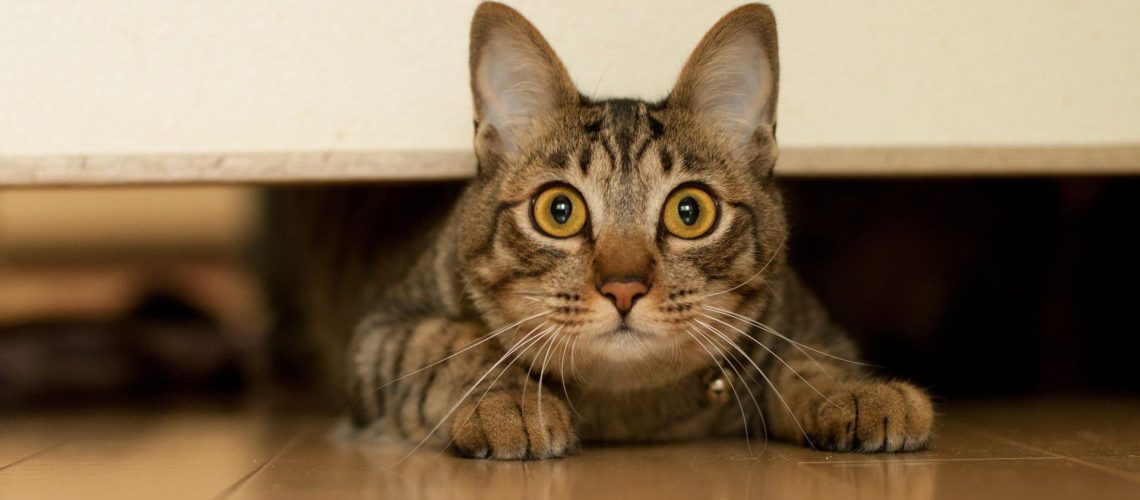Are you a cat lover? Do you have a furry feline friend who means the world to you? If so, then understanding the scary world of seizures in cats is essential for their well-being and your peace of mind. Cats are known for their mysterious and enigmatic nature, but when it comes to seizures, ignorance is not bliss. By delving into this subject, you will gain valuable knowledge that can help you navigate through these frightening episodes with confidence and provide the best care for your beloved companion. In fact, did you know that approximately 2% of cats experience seizures at some point in their lives? Don't let fear hold you back from unraveling the secrets behind these unsettling events. Join us as we embark on a journey to demystify the world of seizures in cats and empower ourselves as responsible pet owners. Together, we can ensure our furry friends live happy and healthy lives. Let's dive in!
Key Takeaways:
- Seizures in cats can be a scary experience for both the cat and their owner.
- It is important to stay calm during a seizure and ensure the safety of the cat by removing any objects that could harm them.
- Keeping a seizure diary can help identify triggers or patterns, which can aid in managing and preventing future seizures.
- If your cat experiences seizures, it is essential to consult with a veterinarian to determine the underlying cause and develop an appropriate treatment plan.
- Medication may be prescribed to control seizures in cats, but it is crucial to follow the veterinarian's instructions carefully and monitor any potential side effects.
Understanding Seizures in Cats: What You Need to Know
What are seizures?
Seizures are sudden, uncontrolled bursts of electrical activity in the brain. They can affect cats just like they can affect humans. During a seizure, a cat may experience convulsions, muscle spasms, and loss of consciousness. Seizures can be scary for both the cat and its owner, but it's important to remember that they are not usually life-threatening.
What causes seizures in cats?
Seizures in cats can have various causes. Some common triggers include:
- Epilepsy: This is a condition characterized by recurrent seizures and is often genetic.
- Toxicity: Certain substances, such as certain plants, medications, or chemicals, can trigger seizures in cats if ingested.
- Infections: Infections affecting the brain or spinal cord can lead to seizures.
- Trauma: Head injuries or other physical trauma can cause seizures in cats.
Effects of Seizures on Cats: How They Affect the Body and Behavior
Physical effects of seizures on cats
During a seizure, a cat's body may go through various physical changes. These can include:
- Twitching or jerking movements
- Rigid muscles or limbs
- Drooling or foaming at the mouth
- Paddling of the legs
Behavioral effects of seizures on cats
Cats may also display behavioral changes during and after a seizure. These can include:
- Confusion or disorientation
- Restlessness or agitation
- Temporary blindness or difficulty seeing
- Lethargy or weakness
Recognizing Signs of a Seizure in Your Cat: Important Warning Signals
Common signs of a seizure in cats
It's important to be able to recognize the signs of a seizure in your cat so that you can provide appropriate care. Some common warning signals include:
- Sudden collapse or falling over
- Rapid eye movements or staring into space
- Twitching or shaking of the body
- Vocalization, such as meowing or yowling, during the seizure
How long do seizures typically last?
The duration of a seizure can vary from cat to cat. While some seizures may only last for a few seconds, others can persist for several minutes. It's important to time the duration of your cat's seizures and inform your veterinarian.
What to Do When Your Cat Has a Seizure: Helpful Steps to Take
Stay calm and ensure safety
If your cat is having a seizure, it's important to stay calm and take steps to keep both yourself and your cat safe. Here are some helpful steps:
- Clear the area around your cat of any objects that could cause injury.
- Avoid touching your cat during the seizure as they may unintentionally scratch or bite.
- Note the time the seizure starts and ends, as well as any specific behaviors or movements.
Seek veterinary care
After the seizure has ended, it's important to contact your veterinarian. They will be able to provide guidance on next steps and may recommend bringing your cat in for an examination.
Treating and Managing Seizures in Cats: Available Options and Strategies
Medication for seizures in cats
If your cat experiences recurrent seizures, your veterinarian may prescribe anticonvulsant medication to help manage the condition. These medications work by stabilizing the electrical activity in the brain and reducing the frequency and severity of seizures.
Lifestyle modifications
In addition to medication, certain lifestyle modifications can help manage seizures in cats. These can include:
- Maintaining a regular feeding schedule
- Avoiding triggers that may induce seizures, such as certain foods or stressful situations
- Providing a calm and stress-free environment for your cat
Potential Triggers for Seizures in Cats: Identifying Possible Causes
Dietary factors
In some cases, certain ingredients or additives in a cat's diet can trigger seizures. It's important to consult with your veterinarian about the best diet for your cat, especially if they have a history of seizures.
Toxic substances
Cats are curious creatures and may come into contact with toxic substances that can trigger seizures. Common culprits include household cleaning products, certain plants, and medications not intended for cats.
Growing Out of Seizures? Can Cats Overcome Seizure Episodes as They Age?
While some cats may outgrow seizures, it's not guaranteed. The likelihood of a cat overcoming seizure episodes depends on the underlying cause. For example, if the seizures are caused by a temporary condition, such as an infection or toxin exposure, they may resolve once the underlying issue is treated.
Creating a Safe Space for a Cat with Seizures: Tips for a Secure Environment
Creating a safe space for your cat can help reduce the risk of injury during seizures. Here are some tips:
- Remove sharp objects and hazards from your cat's environment.
- Provide soft bedding to cushion any falls during seizures.
- Avoid sudden loud noises or bright lights that may trigger seizures.
Support and Resources for Cat Owners Dealing with Seizures: Where to Find Help
If you have a cat that experiences seizures, know that you're not alone. There are resources available to help you navigate this challenging situation:
- Talk to your veterinarian: They can provide guidance on treatment options and answer any questions you may have.
- Join online support groups or forums: Connecting with other cat owners who have experience with seizures can provide valuable support and advice.
In conclusion, seizures in cats can be scary, but with proper care and guidance from a veterinarian, they can be managed. By understanding the signs and providing a safe environment, we can help our furry friends navigate through this challenging condition.
How painful are seizures for cats?
Although cat seizures can appear alarming, they usually do not cause pain to the animal. These seizures can range in duration from seconds to a few minutes, and it may take some time for the cat to recover afterward. The treatment approach will depend on any existing health issues the cat may have and how frequently the seizures occur.
How do you comfort a cat having a seizure?
Ensure that you provide comfort to your cat throughout and after this event. While it is not recommended to disturb her during the seizure, it is acceptable to softly stroke her back and speak to her in a calm manner while she is experiencing the seizure. This may assist in keeping her more relaxed during and after the incident.
How long do cats with seizures live?
If your cat's seizures are caused by a treatable condition and can be managed with medication, they can have a normal lifespan. However, if the seizures occur frequently, are severe, or are caused by a serious condition like a brain tumor, the outlook may not be as positive.
What stops cat seizures?
The treatment for primary epilepsy involves the prolonged use of anti-epileptic medications, which often need to be taken for the rest of the individual's life. There are several drugs that can be used to treat this condition in cats, such as phenobarbital, levetiracetam, zonisamide, gabapentin, and pregabalin. This treatment should be initiated based on specific criteria discussed below.
Can cat seizures cause brain damage?
Treating any cat that experiences regular seizures (more than one every six to eight weeks) is crucial, even if the cause is unknown. This is because each seizure can result in additional brain damage and raise the risk of more severe seizures and complications.
Can I hold my cat during a seizure?
During a seizure, dogs or cats are unaware of their actions and have no control over their jaw movements, which can be very forceful. It is crucial to keep your hands and face away from the pet's mouth during and right after the seizure.

















